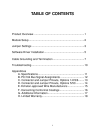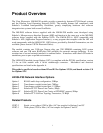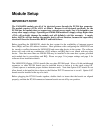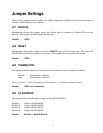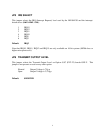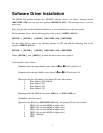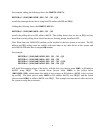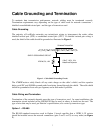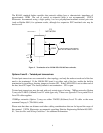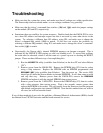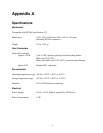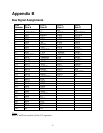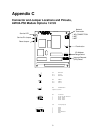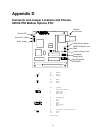
8
The RS-485 standard further specifies that network cabling have a characteristic impedance of
approximately 120W. The use of coaxial or twinaxial cable is not recommended. VISTA
Electronics recommends using a high quality, low loss polyethylene-insulated twisted pair wire
(such as Belden 9841) for optimum results, although less expensive PVC-insulated wire may be
used as well.
120W
P3
NETWORK
1
2
3
R11
10
W
LM104-P50-1
Figure 2. Termination of an LM104-P50-1 RS-485 network node.
Options 2 and 3 – Twisted pair transceivers
Twisted pair transceivers are connected in a bus topology, and only the nodes at each end of the bus
need to be terminated. If the LM104-P50 board is at either end of the bus, enable the built-in
termination by installing a shorting jumper at location JP3. If the LM104-P50 is not at either end of
the bus, leave JP3 open. The factory default is no termination – JP3 is open.
Twisted pair transceivers may be used with only certain types of wiring. 78Kbps networks (Option
2) may use 22AWG (0.65mm) Level IV cable types only. Please see Appendix E for a partial list of
Level IV cable suppliers.
1250Kbps networks (Option 3) may use either 22AWG (0.65mm) Level IV cable or the more
common Category 5 (TIA 586A) cable.
Please note that there are distance and other cabling considerations that are far beyond the scope of
this manual. VISTA Electronics recommends consulting Echelon Engineering Bulletin #05-0023-
01, “Junction Box and Wiring Guidelines” for additional information.



